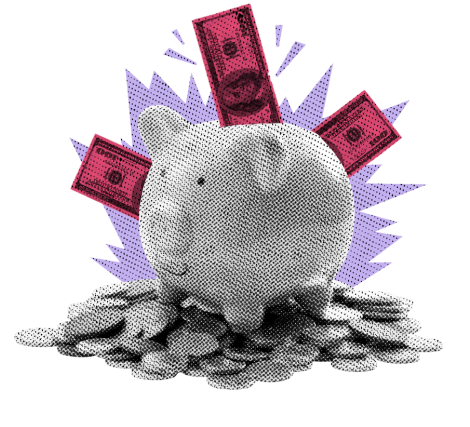
Tariffs are coming—and the impact will be felt by U.S. consumers, companies, and portfolios this morning.
KEY TAKEAWAYS
- Tariffs are paid by U.S. companies—not foreign governments—and lead to higher costs for either businesses or consumers.
- Tariffs historically raised revenue before the income tax existed; today, they’re used to protect domestic industries.
- Consumers usually opt for cheaper goods; tariffs distort market pricing to protect domestic suppliers.
- New tariff hikes will likely cause inflation, lower corporate profits, or both.
- Labor shortages already exist in key sectors, limiting the ability to scale U.S. production without driving up wages—and prices.
MY HOT TAKES
- Tariffs are an accounting reality, not an economic theory.
- Protectionist policies may hurt more than they help, especially in today’s labor market.
- The cost of reshoring manufacturing is enormous and will eventually be passed on to consumers or investors.
- Idealism in policy without realism is dangerous—just ask Don Quixote.
- Short-term patriotic wins can lead to long-term economic losses.
- You can quote me: “Either you or the companies in your portfolio will pay the ACTUAL DOLLARS AND CENTS for the tariff. Nothing abstract about that.”
Tariffs are coming—and the impact will be felt by U.S. consumers, companies, and portfolios starting this morning.
Check, please! I will start this morning’s post with a quote from the famous novel Don Quixote, written in the early 1600s.
…those things over there are not giants but windmills.
I feel like, this morning, I need to relay some very stark realities, again. Tariffs are paid by US companies to US customs when imports come across the border. US companies! Those tariffs increase the cost to produce goods. Those US companies can choose to make less profit, or they can raise the price they charge their customers. Therefore, consumers will pay either some or all the tariff. One or both will be worse off. Now, I know that economics can get a bit esoteric sometimes, and one can easily debate the overly simplified, abstracted models which we so often refer to, but this, here, is an accounting reality. Either you or the companies in your portfolio will pay the ACTUAL DOLLARS AND CENTS for the tariff. Nothing abstract about that.
Tariffs are used for two primary reasons.
1) To raise money for the government. It is true that at one time, the US collected huge sums of money using tariffs. However–don’t miss this–THAT WAS BEFORE THERE WAS INCOME TAX. It was the only way to collect revenue prior to 1923, when the 16th amendment was ratified.
2) To protect domestic industry. If you could buy a pencil made overseas for 10 cents, why would you pay 20 cents for a pencil made in the US? Now, I am a HUGE patriot, and I absolutely positively like to buy US made products. I am sure that there are some folks who exclusively buy American-made products. However, the vast public will not pay 20 cents for a pencil that can be bought for 10 cents, assuming they are the same quality. The idea of a tariff is to make the price of the foreign-made pencil 21 cents by applying a 110% tariff on imported pencils. You would then choose the 20 cent, American-made product over the 21 cents, foreign made product. It helps the domestic company, but it hurts the foreign company, because it will then sell less pencils to US customers. Folks, it really is that simple.
Now, we cannot forget that governments still do collect money from tariffs, and that may be good for government budgets, but for the most part, governments today–you know, in modern times–utilize tariffs to protect their local companies.
Let’s talk about local companies for a moment. The US has the largest economy in the world. It got there on the backs of those fantastic American companies that have thrived in the free-market, capitalist system that allowed them to pursue profits. If you owned stocks in those fantastic American companies, you have shared in their great successes. Those great profits are the incentive sought by hard workers, innovators, and investors, the real engines of American industry.
Yesterday’s announcement that the US will on Saturday night raise its average effective tariff rate from around 2.5% to something in the mid-20s will exact a significant blow initially to US companies, eventually, to US consumers, and without a doubt, to investors in US stocks. I am not going to run through the exact proposed tariffs and the dollar amounts that would be effectively removed from corporate profits, but it is not trivial. So, what happens next? In a best-case scenario for stockholders, a US company that currently produces outside the border, will now raise its prices to cover the tariffs and keep its margins completely intact. But wait, what is best-case for the company is worst-case for consumers, who will now have less money to spend. Can they meet in the middle? Sure, but in that case both the company and the consumer are both worse off than they were prior to the tariff. It’s just math, silly.
But wait, there is an endgame. That endgame is the creation of more American jobs as companies move all their production to the US. Well, I am all for more jobs, because that means stronger consumption, which you know, I am obsessed with. I have a controversial question; do we even need more jobs in America? Well, let’s go to Tuesday’s JOLTS number to find out. As of February, there were 7.376 million job vacancies in America, 482,000 of them in manufacturing and another 1,071,000 in Trade, Transportation, and Utilities. Except for the period after the pandemic, that is right around the largest number of job openings since the Bureau of Labor Statistics started tracking vacancies. Because there are so many vacancies, companies must pay higher wages to attract workers. I am all for higher wages for workers, but higher wages mean higher costs, and now we are back to one of the classic causes of inflation. Either the company will have to eat the profit, or the consumer will have to pick up the tab.
Does this seem overly simplistic? Well, to be honest, I am leaving stuff out because I respect your time. HOWEVER, if I could show you the complete model, you would only see a far grimmer picture. What about the costs of rerouting supply chains? What about supply chain disruptions causing inflation, like we had during the pandemic? What about the cost of building a new plant in the US? For reference, a car manufacturing plant costs $1 to $2 billion and 2 to 4 years to complete. Who is going to pay for that? There are only three choices a) the company / stockholders, b) the consumer, or c) all of the above. Notice how there is no selection for none of the above.
Now, I have to be fair and say that seeing those numbers on the President’s chart yesterday was eye-opening. I cannot yet vouch for exactly how his staff came up with some of the foreign tariffs charged to the US, but if those are real, I can understand why the US might want to even things up and counter-tariff. Will these tariff’s ultimately exact pain on the US’s trade partners as demand for their goods falls off? Yes, but it will come at the expense of either US companies and their stocks, or consumers who will pay more for goods than is necessary, or c) all of the above. I will go with ‘c’.
This morning, we will see what markets are predicting will be the long-term outcome of this new era. Now, I want to be fair. Doing nothing at all to get a handle on trade is not a good choice. Unfortunately to create sea changes, one needs patience and persistence. I am all for sea changes but measured. So, here is the million-peso question. What can we learn from Don Quixote? Pursuing idealism without grounding in reality can lead to folly. However, life without idealism is not great either. Is there a middle ground? Maybe, but we will probably never know.
YESTERDAY’S MARKETS
Stocks bobbed and weaved into a positive close but ultimately closed in the green on hopes that tariffs may be less than expected. Bond yields continued to fall as economic anxiety grew.

NEXT UP
- Initial Jobless Claims (March 29th) is expected to come in at 225k slightly above last week's 224k claims.
- ISM Services Index (March) may have slipped by 52.9 from 53.5.
- Fed speakers today: Jefferson and Cook.
.png)

